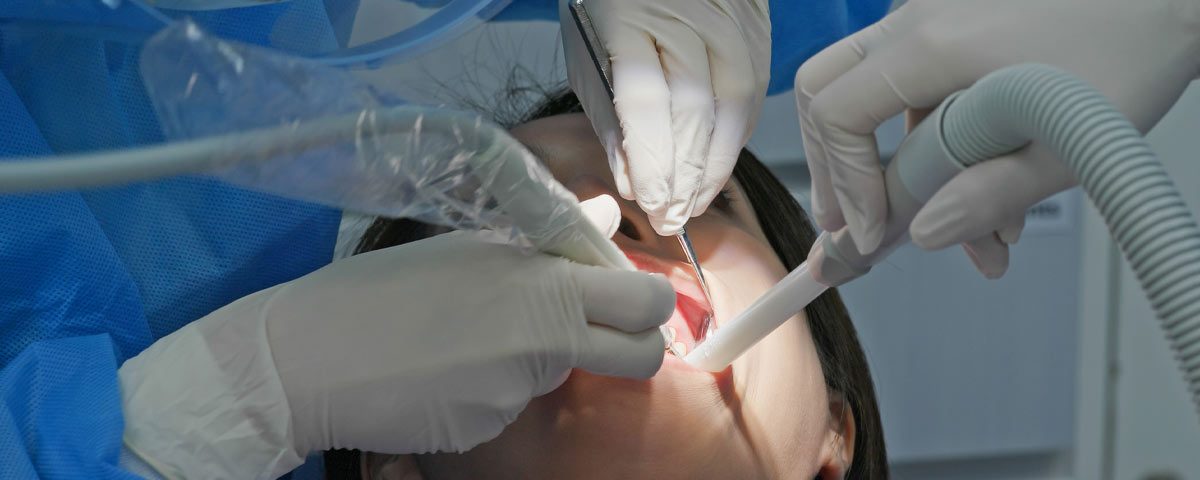
What Is Laser Dentistry and Is It Right For Your Child?
July 24, 2025
Can Veneers Cause Bad Breath?
July 31, 2025After gum surgery, most people start to heal in a few days. But sometimes, healing slows down or feels wrong. This could mean an infection. In this article, we explain all the common signs of infection after gingivectomy, so you know what to watch for and when to act.
Table of Contents
ToggleDelayed Healing
Your gums should slowly improve after surgery. Some soreness and redness are normal at first. But if your gums still look raw or feel painful after a week, that may be one of the signs of infection after gingivectomy. Healthy gums begin to close and change color as they heal. If the area stays red or open, infection may be slowing your recovery.
Persistent or Excessive Bleeding
A small amount of bleeding is common for the first day or two. It often shows when you brush or rinse. But if bleeding continues past 48 hours or becomes heavy, this may be one of the signs of infection after gingivectomy. The gum tissue may not be healing properly, or something deeper could be wrong.
Fever or Chills
A fever over 100.4°F is not a normal part of healing. If you feel hot, cold, or both, your body may be fighting an infection. This is one of the most important signs of infection after gingivectomy. You might also feel sick, weak, or have trouble focusing. These symptoms mean your immune system is under stress and needs support.
Swelling That Doesn’t Go Down
After surgery, it’s normal to have some swelling for a few days. But the swelling should start to go away after day three. If your face, gums, or jaw still look swollen after five to seven days, that may be one of the signs of infection after gingivectomy. Swollen areas that feel hot or sore may need treatment to prevent further issues.
Unusual Pain That Gets Worse
Mild pain usually fades each day after gum surgery. But if the pain becomes stronger or spreads beyond the surgery site, this may be one of the signs of infection after gingivectomy. Pain that doesn’t improve with medication or keeps you awake at night is not normal. It often points to inflammation or infection beneath the gum surface.
Fatigue
After surgery, you may feel tired for a short time which is common. But if you still feel weak or worn out after several days, it could be one of the signs of infection after a gingivectomy in Phoenix. Infections use up your energy and slow your body’s ability to heal. Feeling unusually tired with other symptoms may mean your body is fighting too hard.
Pus or Discharge at the Surgery Site
If you see thick yellow or white fluid at the gum site, this is a serious warning sign. It usually means pus is forming, which often comes with a bad smell or taste. This is one of the clearest signs of infection after gingivectomy. The gum tissue may be breaking down. Without fast treatment, the infection could spread to nearby teeth or bone.
Let’s Recap
Most people heal quickly after a gingivectomy, but infections can delay recovery and cause lasting damage. Knowing the signs of infection after gingivectomy gives you the power to act early. Pain, swelling, bleeding, pus, fever, and fatigue are not normal when they last too long or get worse. If you notice any of these signs, contact the best dentist Phoenix, AZ, right away.
FAQs
How Long Does It Take to Heal After a Gingivectomy?
Most patients heal within one to two weeks. Some tenderness may last longer, but the gums should improve each day.
Is Bleeding Normal After a Gingivectomy?
A small amount of bleeding is common during the first 48 hours. Bleeding that continues or worsens may be a sign of infection.
How Can I Prevent Infection After Gum Surgery?
Follow your dentist’s instructions, keep your mouth clean, avoid touching the area, take your medicine as directed, and don’t smoke.
Can I Eat Normally After a Gingivectomy?
No, you should eat soft foods for a few days. Avoid hot, spicy, or crunchy foods until your gums start to heal.
When Should I Call My Dentist After a Gingivectomy?
Call your dentist if you have strong pain, swelling that gets worse, fever, or pus. These could be signs of infection.



